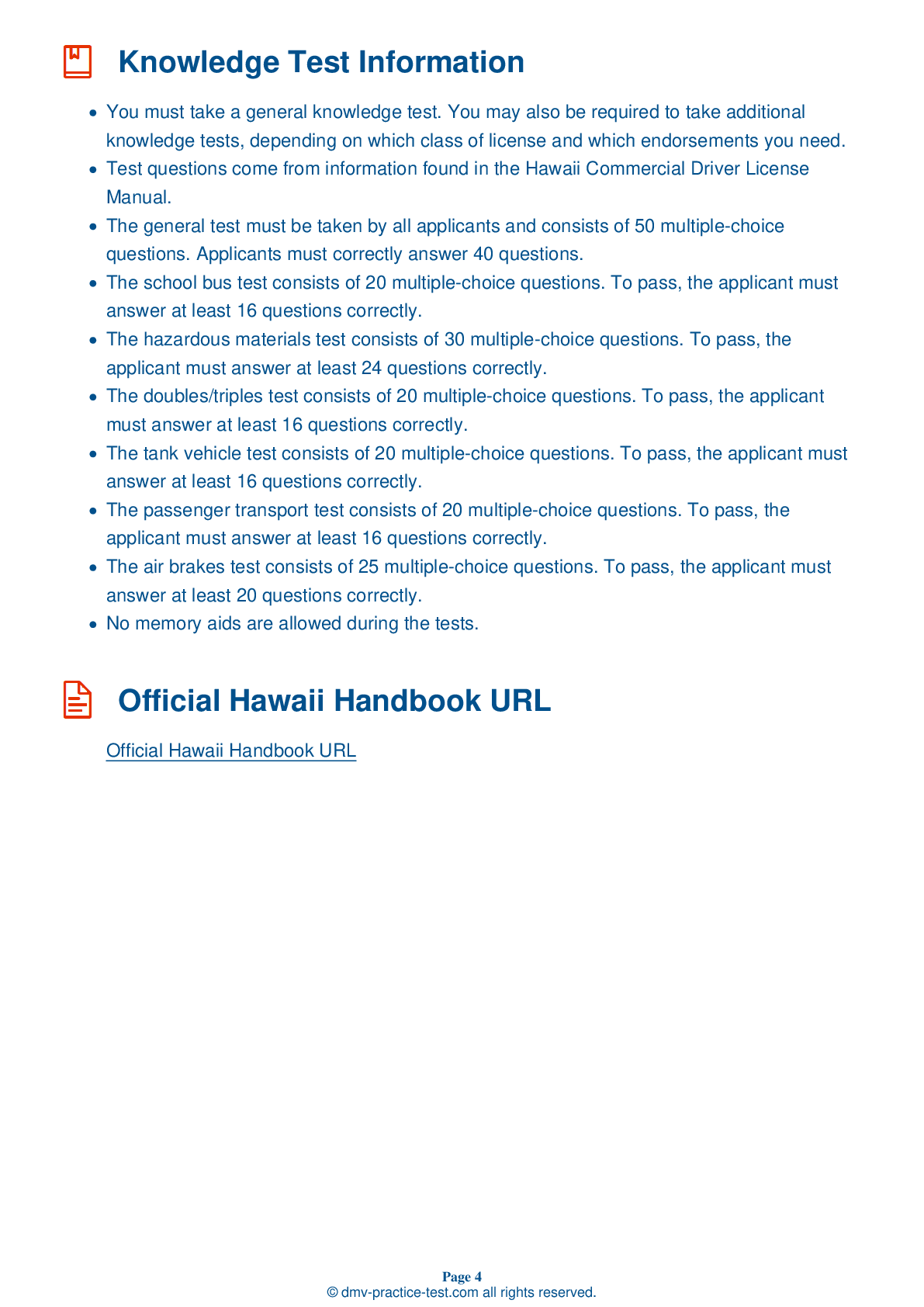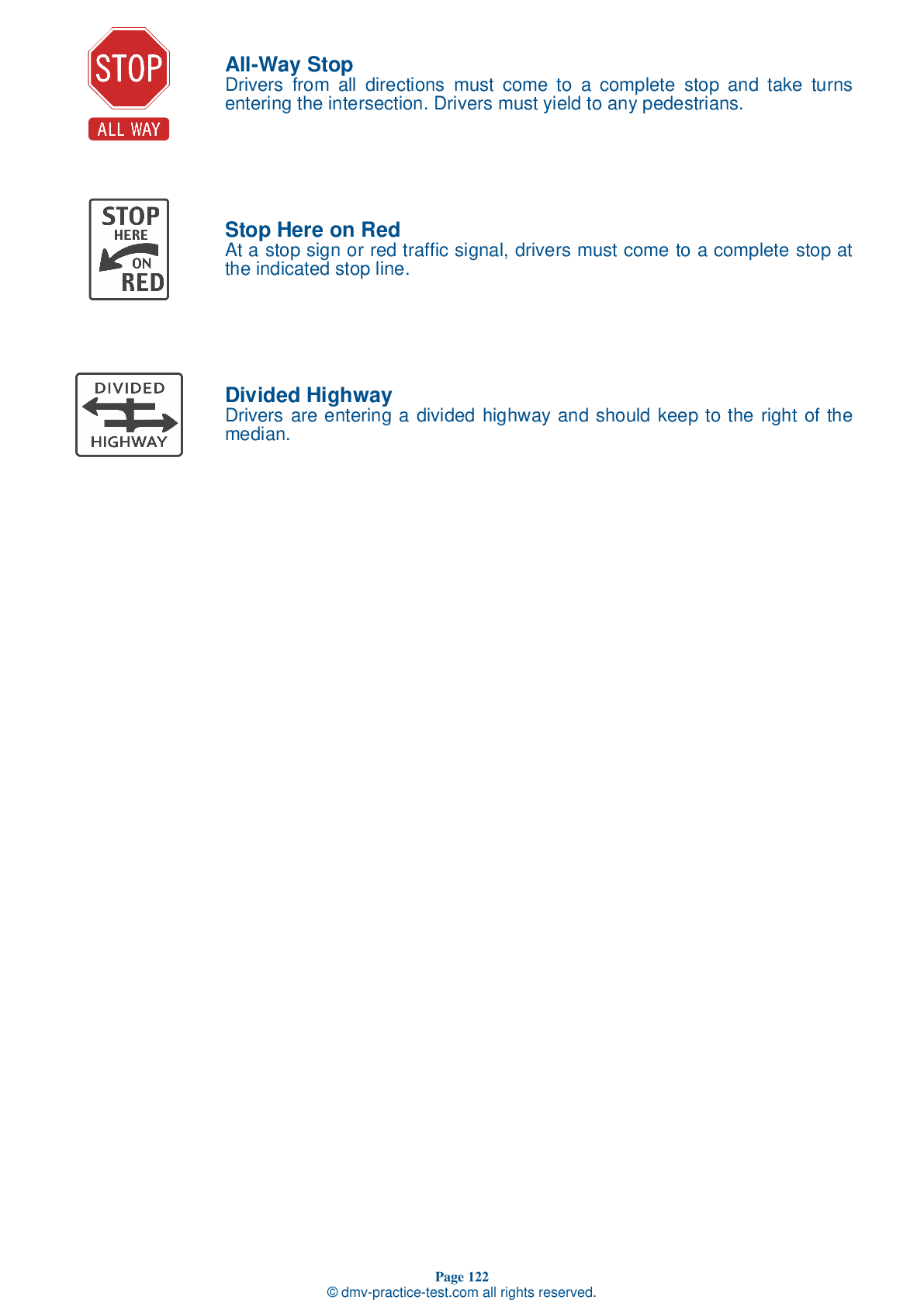Combination Vehicles Practice Test | Hawaii 2025 #2
Train for FREE online with our Hawaii CDL combination vehicle test. The official exam test consists of several obligatory parts, with all of them checking your knowledge of different blocks of road rules. If you need to obtain a HI combination license in 2025, practice as much as possible. Free sample tests published on our website will help you check and improve your knowledge and boost your grades. Please bear in mind that DMV requirements for issuing a combination license may vary from state to state.
1 . A trailer that is too high:
Before coupling together a tractor and a trailer, you should make sure the trailer is at the proper height. If the trailer is too low, the trailer nose may be damaged. If the trailer is too high, it may not be able to couple correctly.
2 . The emergency air line supplies air to the:
The emergency air line (also known as the supply line) has two functions. The first is to supply air to the trailer air tanks, and the second is to control the emergency brakes on combination vehicles.
3 . When testing ____, you should apply your vehicle's brakes with the hand control while moving the vehicle forward slowly.
To test the trailer service brakes, you should first ensure that the braking system has a normal air pressure level, then release the parking brake. You should then move the vehicle forward slowly and apply the brakes with the hand control. If the trailer service brakes are working properly, you will feel the brakes activate.
4 . If you must cross traffic while driving a combination vehicle, you should:
Combination vehicles require more space on the road than other vehicles. When entering or crossing traffic while driving a combination vehicle, it is especially important that there is a large enonugh gap in traffic to safely do so.
5 . In a vehicle equipped with an automatic tractor protection valve, the valve will pop out when air pressure drops to a level between:
In vehicles equipped with an automatic tractor protection valve, the valve will pop out if air pressure drops to a level between 20 and 45 psi. When the valve pops out, the protection valve will close, stopping the flow of air.
6 . If a trailer begins to skid, it is best for the driver to:
If your trailer begins to skid, you should release the brakes to regain traction. The trailer will begin to straighten out once the wheels begin to grip the road again.
7 . What does an Anti-Lock Braking System (ABS) do?
An Anti-Lock Braking System (ABS) helps prevent wheel lockup during hard braking. If ABS detects impending lockup, it reduces braking pressure to a safe level.
See the exact questions that will be on the 2025 Hawaii DMV exam.
99.2% of people who use the cheat sheet pass the FIRST TIME
Lillian MCcranie explains how our CDL study guide was helpful in passing the exam and recommends it to everyone.
Cameron tells us how he purchased the CDL exam, and found it to be a useful tool which helped him pass the exam and find a job.



